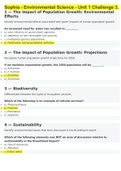Samenvatting
Samenvatting literatuur - Emotie, Cognitie en Gedrag vanuit Klinisch Perspectief: deel 1 (P_BEMCG_1)
- Instelling
- Vrije Universiteit Amsterdam (VU)
Samenvatting alle verplichte literatuur voor het tentamen van Emotie, Cognitie en Gedrag vanuit Klinisch Perspectief Deel 1
[Meer zien]













